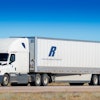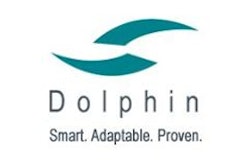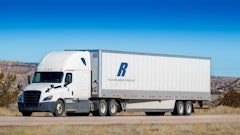
In many organizations, the finance department is viewed as a cost center. At first glance, there do not seem to be many, if any, opportunities for accounts payable (AP) or accounts receivable (AR) to contribute to meaningful business objectives. This business unit is traditionally tasked with billing customers and paying vendors. It is responsible for getting the company paid and paying the company’s bills. Generating revenue typically does not factor into the equation.
That was the situation at Bourns, Inc. as recently as 2012. As a global manufacturer of electrical components for the automotive, industrial, consumer products and communication industries, Bourns handles about 100,000 invoices per year. AP department functions are decentralized with nine separate manufacturing plants each handling individual AP responsibilities. As many as 80 percent of invoices are purchase order-based because the company purchases such a high volume of raw materials, further complicating the process.
The process was mostly paper-driven, required hands-on attention and was extremely labor intensive. When Bourns’ chief financial officer (CFO) saw the day-to-day actions required to manage this, the inefficiencies were both obvious and startling. He issued a challenge to the AP team at the Riverside, Calif. plant: It had one year to implement a touchless processing program that would see at least 60 percent of all invoices being processed with no AP involvement once invoices entered the work flow.
Automating Approvals
It was an exciting challenge with the potential to yield significant results. Touchless processing promised to help Bourns reduce costs through better productivity, improve cash flow by capturing early pay discounts and manage risk with better reporting. However, it would require more than just implementing new technology in its SAP database. To succeed, the entire AP process needed to be transformed. Bourns selected Dolphin Enterprise Solutions Corp. to assist in this journey and Dolphin quickly became a trusted partner.
An early step in the process was to automate—and streamline—processes wherever possible. Manual data entry is inefficient, repetitive and error-prone. It’s a mindless task that can distract team members from value-focused activities. To overcome this, optical character recognition was deployed to capture all of the inbound paper that the AP department typically handled, such as vendor invoices. Paper generated within the company for AP—such as internal payment requests—were also standardized and digitized within the SAP database.
At Bourns, a three-way validation system within SAP was implemented with the purchase order (PO), invoice and goods receipt. If all three of these documents match, then the payment is automatically posted. In an instance in which an invoice may not have a goods receipt, a simple approval is sent to the requisitioner of the PO via email.
Some invoices, such as utility bills, do not come with purchase orders, but that did not impact the new process. Bourns was able to deploy a table within SAP that was coded to correspond with the vendor and the approver. It even allowed for split payments for accurate budgetary accounting between departments.
Whenever possible, a goal was to maximize the company’s existing investment in SAP. Instead of dedicating resources on customized solutions bolted onto SAP intended to handle exceptions that Bourns encountered, specific rules were created within SAP. Configurable business goals were important to assist with validating invoices against enterprise resource planning (ERP) data. It also helped Bourns innovate existing, time-consuming processes for freight allocations and transport testing. Now, these tasks can be handled in a fraction of the time that was once required.
Innovation through Process Change
Although automation and leveraging the SAP database to the fullest were important technology steps, the most important impact on the project was the results achieved through long-term and meaningful process change.
This included resetting value expectations for the AP team. Before the project, contributions were limited because expectations were low. Employees were relegated to basic service tasks such as scanning and data entry. They were used to handling 100 percent of the invoices and it took time to help them understand that the vast majority of this work should auto-post without AP intervention. This was not an overnight change, and it required meeting with employees each week to discuss why certain invoices did not auto-post and how they could auto-post in the future.
New common metrics and measurements for success were also established. Over time, the AP department started to see themselves as more than just number punchers. They are skilled workers and critical thinkers. With a high level of executive support, AP employees began to see this as well. They became invested in the project, too. Instead of worrying about data entry, the team was focused on the important goal of finding and securing as many early pay discounts as possible. This change in mindset would not be possible without dedicated executive sponsorship. Having a member of leadership, such as the CFO, take the time to communicate the importance of a project and to understand the concerns of affected employees went a long way to creating a team approach to meeting goals.
Meeting the Challenge
In almost exactly one year, Bourns met the CFO’s challenge of processing 60 percent of all invoices touchlessly, and soon after, the team actually exceeded that goal to hit 70 percent touchless processing.
Prior to the project, the Riverside plant was missing out on $7,000 in early pay discounts per month. Today, there are virtually no lost early pay discounts. That equates to $84,000 in additional cash flow for the company from just one location.
The benefits extend well beyond simply capturing that revenue. Having that extra cash on hand now allows other departments, such as purchasing, to take advantage of additional discounts offered by their vendors, further driving down costs. Reporting and audits are also easier to handle and AP employees can focus on other value-added activities to support business growth.
This pilot project was limited to Bourns’ Riverside manufacturing facility. However, given the resounding success that Bourns was able to achieve in such a short period of time, Bourns is now working to extend the touchless processing initiative to additional locations. This can help the company adapt to changing business conditions, expand into new territories and support company growth in the future.
At Bourns, AP is no longer viewed as a cost center. Because of the process changes that were implemented to lower costs, improve cash flow and manage risk, AP is now a business unit directly contributing to the success of Bourns’ business objectives.

















